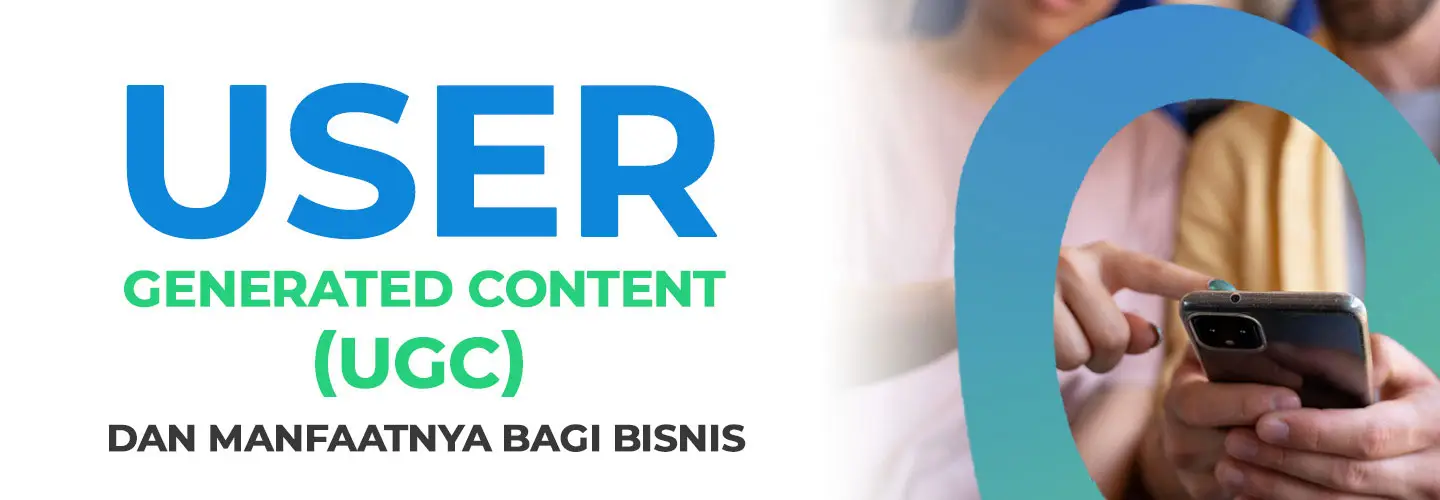What Is User Generated Content (UGC)? Learn Its Types, Benefits, and How to Run It

When you launch a new product, then a week later there are consumers who create content related to how to use and the benefits of your product on social media. This is a form of User Generated Content or UGC.
User generated content can be said to be a way for users of a product to show how to use it, its impact, and its benefits in their lives. UGC is not just about creating content, but its impact on the brand and the user itself.
Businesses that prioritize UGC can have an impact that is no less than content marketing in general. Understand about UGC starting from the types, benefits, and how to run it below.
What is User Generated Content?
User Generated Content is a type of original content and related to a brand or product that is created and published by content and users through marketing channels such as social media and blogs.
User generated content comes in various forms, ranging from images, videos, product reviews, testimonials, and even podcasts.
UGC is usually created for free, especially if consumers really like and feel the benefits of your product. When consumers create UGC, they will influence and invite social media users to use your product.
In addition to social media, article content can also become UGC, especially for those who actively write on community platforms or have their own blogs.
Currently, user generated content has become one of the content marketing strategies implemented by companies. One strategy used by companies to develop their UGC is to send free products to social media users who have previously reviewed the product and published it.
In addition, UGC is also useful for spreading information regarding the benefits and advantages of the product through word of mouth. This is also one of the "free" marketing strategies that brands like.
Types of User Generated Content
If you want to try running UGC, first understand the various types that your brand and product can target, reported by Hootsuite.
Organic content
Organic UGC is content created by consumers without a request from the brand. They consciously create content about the benefits and how to use the product effectively. Organic content is the type of user generated content that many brands hope for.
Reviews and testimonials
Positive reviews and testimonials on social media can become UGC. You can ask permission from these consumers to include their reviews and testimonials on social media and websites. You can also collect several types of positive reviews to be positive evidence of the benefits of your product.
Photos
Photos are one of the most common UGC. Photos that are included in user generated content are when consumers use your product, or show the benefits or impacts of the product. Use a specific hashtag to collect these images more easily.
Videos
Instagram, TikTok, YouTube content are forms of user generated content that are currently popular. An example is the “product hauls” content on YouTube, where YouTubers review products they have just purchased from various brands. You can also use parts of the video where the YouTuber mentions your product.
Social media content
Social media content comes in various forms, from videos, podcasts, photos, GIFs, stories (short videos), even tweets on X. Take advantage of each platform and the type of content in it to produce user generated content.
Blog articles
Usually UGC in the form of articles can be product review articles, news or updates related to products, to SEO articles with CTAs to your product.
Benefits of User Generated Content
- Shows that your product is actually used and useful for many people.
- Shows the originality and honesty of your product.
- Creates a community of loyal users or loyal to your product.
- Becomes a low-cost or even free marketing strategy to promote your product.
- Becomes an additional portfolio for your product and brand.
Effective Ways to Run UGC
Quoting Buffer, here are five effective ways to run a user generated content strategy:
Create trends and hashtags
First of all, you have to encourage consumers to create content on social media. The way to do this is by creating a campaign with a special trend or following existing trends, and preparing a hashtag to collect the content.
Relevant and easy-to-do trends will make consumers willing to create UGC for free. Especially if there is an aspect of FOMO (Fear of Missing Out) on social media today.
Give prizes to users who create UGC
To further increase enthusiasm, you can give prizes to consumers who create UGC. It doesn't have to be everyone, create a draw with attractive prizes such as discount vouchers and limited products. This will attract attention and motivate consumers to create the best content.
Give internal teams the freedom to be creative
In addition to consumers on social media, you also have to motivate internal teams to participate in creating UGC. Don't limit their creativity, let them create content that suits their desires and style, as long as it is in accordance with the campaign theme and trends.
Don't be limited to social media content
In addition to social media, you can push user generated content products through other channels. An example is blog content, where the campaign you create will also provide a prize draw for consumers who write articles on their personal blogs.
Do these best practices
Remember these few ways when creating a UGC campaign:
- Always ask the content owner's permission before using their content on your brand's social media account or website.
- Always add credit such as writing the source of the content or the name of the consumer's social media account whose content you are using.
- Interact with the content that consumers have created, don't just like or repost, but also leave comments and reply to the comments in it.
Be inclusive by showing content from various types of consumers from various backgrounds.
That's complete information about user generated content that you should understand. In general, UGC is a form of content created by social media users related to your product. The forms vary, from videos, photos, tweets, to articles.
Interested in running or developing UGC for your products and brands? Learn about UGC, channel marketing, to content marketing through Prasmul-Eli's short program entitled Digital Marketing Fundamentals.
The program is filled by digital marketing experts and professionals who are ready to share knowledge and best practices of digital marketing for you. Click this link to register for the program!
